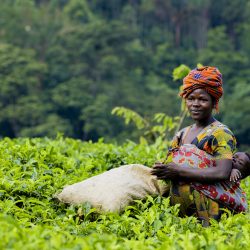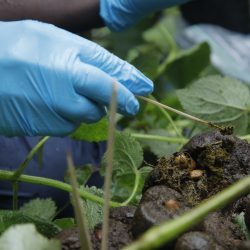2010 Virunga Mountain Gorilla Census Report: Deeper insight into population dynamics
Blog | 17/06/11
The ultimate number recorded from a census of an endangered species, and in this case critically endangered mountain gorillas, is typically the headline news story. For conservationists, however, it is the details of what is behind that number that is the most important in management decision-making as well as larger strategic conservation efforts.
The full report from the 2010 census of the Virunga Massif population of mountain gorillas is now out and ready to be used in the continued conservation of this amazing species. View/Download a PDF of the report in its entirety.
The census reports that the population of mountain gorillas in the Virunga Massif, during the period the census was conducted, was 480 individuals. This represented a 26.3% increase in the number of mountain gorillas for this population between 2003 to 2010, which is an annual growth rate of 3.7%.
These 480 individuals were in 24 habituated groups (349 individuals in groups accustomed to regular visits by researchers or tourists) and 12 unhabituated groups (101 individuals). In addition, 14 lone silverbacks were counted. A correction was made (details of the calculation included in the full report) for the estimated number of infants (16) that were likely missed as they tend to share their nests with their mothers.
Looking at the population growth rates for the habituated gorillas compared to the unhabituated gorillas, we see that while the overall population grew by 3.7% annually, the habituated gorilla population grew 4.7% annually and the unhabituated gorilla population grew 0.9% annually. The difference in population growth rates can be attributed to the ‘extreme conservation’ efforts extended to habituated gorillas, including the routine monitoring of habituated groups and medical intervention by veterinarians when a life-threatening illness or injury is observed.
While the growth rate of the unhabituated population is lower than the growth rate of the habituated population, it is positive, which is to be celebrated. In a recent study published, unhabituated populations over the period of 1967 to 2008 were found to have experienced overall negative population growth (-0.7%). The census report sheds light on the recent population dynamics for the unhabituted population, which was found to increase between 2003 and 2010, a likely result of coordinated conservation efforts in the region.
The authors, including IGCP’s Maryke Gray and Augustin Basabose, note that the census results represent “a remarkable conservation achievement, and is an extraordinary tribute to the perseverance and dedication of the national park authorities and their partners, and to the collaboration between the three countries in protecting and managing this transboundary ecosystem.”
In addition to details about the methods used in the field, in the lab, and in the analysis, details are given as to the signs of human disturbance found while conducting the census, including location and extent of snares found, beehives found, evidence of timber cutting, etc. It even included the location of former camps that were discovered while conducting the census, information that IGCP and partners will use to subsequently go back and remove the refuse left from those camps (more on that in this blog in months to come).
The census report is also documentation of the momentous efforts in coordinated planning, execution, and analysis done by a team of people. The International Gorilla Conservation Programme is proud to have led this process alongside our partners and look forward to the 2011 census of the Bwindi-Sarambwe population of mountain gorillas, the only other population of mountain gorillas on earth.





